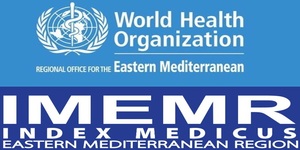Assessment of the Quality of End of Life Conditions and Care of Children Admitted to Oncology, Haematology Centre and Critical Illness in ICU Children Centre
DOI:
https://doi.org/10.36321/kjns.vi20171.2292Keywords:
End of life care, Palliative care, Cancer, Children, Critical illness, Intensive care unitAbstract
Background: The majority of deaths among hospitalized children happen in the Oncology, Haematology Unit and also in the ICU. There is no well-defined, reliable and valid method for measuring the quality of end-of-life care in the field of pediatric palliative care; further, limited studies that have examined the quality of dyeing experience among children in the Kurdistan Region of Iraq.
Objectives: The study was aimed to assess the nurse's perceptions regarding the quality of children dying experience in the Sulaimanea Oncology and ICU Centre.
Methodology: A cross- sectional descriptive studywas conducted and sixty nurses (30 Oncology and 30 ICU nurses) were recruited in the study. The data collection started from May 20th to July 20th 2016. Study objectives were addressed using a survey design; a modified validated Quality of Death and Dying questionnaire and open ended questions were used in order to collect the quantitative and qualitative data Findings.
Results: The majority of participants reported that cancer dying children were significantly suffered pain, bleeding, stress and terrified from the hospital more than ICU dying children and also cancer children, family seem to stay with their child during death time more than the ICU children families. Nurses in both settings faced three barriers in offering the end of life care, such as no palliative unit available along with no adequate palliative care offered to the patients as standard in both Oncology and critical care settings (Institution and organizational barrier). Further, the family also makes a barrier as they spent too much time with their children and participate in the care of their children (family barrier), and limited role of the nurses barrier.
Conclusion: The findings of the present study conclude that there are some significant differences between the quality of a child's death between Cancer and non- Cancer patients Three barriers were reported by the nurses that may hinder the access of end of life services, such as (Institution and organizational barrier, family barrier and limited role of the nurse's barrier)
Recommendations: Standard end of life care is necessary to manage deterioration patients and also a continuous specific end of life care education course are required for the nurse working in these settings.
Downloads
Downloads
Published
How to Cite
Issue
Section
License
Copyright (c) 2017 Pary Mohammad Azize

This work is licensed under a Creative Commons Attribution 4.0 International License.













